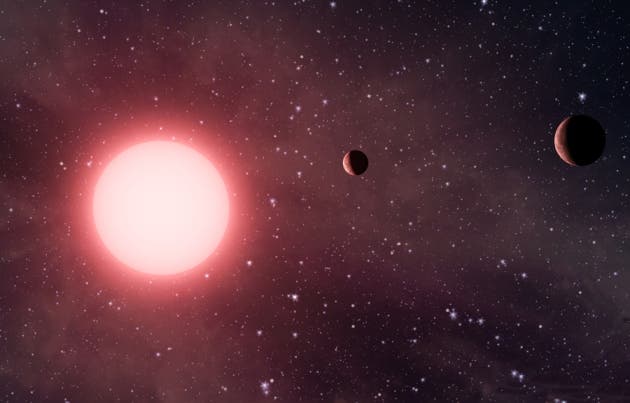Observations from NASA’s Kepler spacecraft have for the first time uncovered a ’tilted’ solar system, with two planets orbiting a star at a 45-degree angle.
Did you ever wonder why the planets from our Solar System are all in the same plane? They formed from a flat disc of gas and dust revolving around the Sun’s equator – Earth’s orbit makes an angle of just 7.2 degrees with the plane of the Sun’s equator, and this is similar for all the 9 8 planets (sorry Pluto). This is the case with pretty much every solar system astronomers have discovered so far.
However, five years ago, they began observing planets orbiting at steep angles to their stars’ equators; some planets even spin in the opposite direction to their star. But not a single one had a misaligned multiplanetary solar system – until now.
Daniel Huber of NASA’s Ames Research Center in Moffett Field, California, and his colleagues looked at Kepler-56, a star roughly 860 parsecs (2,800 light years) from Earth; it has two planets which orbit their sun closer than Mercury does to ours. Observations on this system revealed that the plane of the star’s equator tilts 45 degrees to the planets’ orbits.
“It was a big surprise,” Huber says.
This discovery was only possible because their star is relatively big (4 times bigger than the Sun), and the planets are orbiting so close. To find out what caused the tilting, the astronomers measured the velocity of Kepler-56 through space using the 10-metre Keck I telescope on Mauna Kea in Hawaii. The W. M. Keck Observatory is a two-telescope astronomical observatory at an elevation of 4,145 meters (13,600 ft) near the summit of Mauna Kea.
“That revealed the culprit,” Huber says: a distant body whose gravitational pull tugs the star and also tilts the planets’ orbits.
“It’s a fascinating discovery,” says Amaury Triaud, an astronomer at the Massachusetts Institute of Technology in Cambridge. “It’s nature: you observe, and you find extraordinary stuff.”



